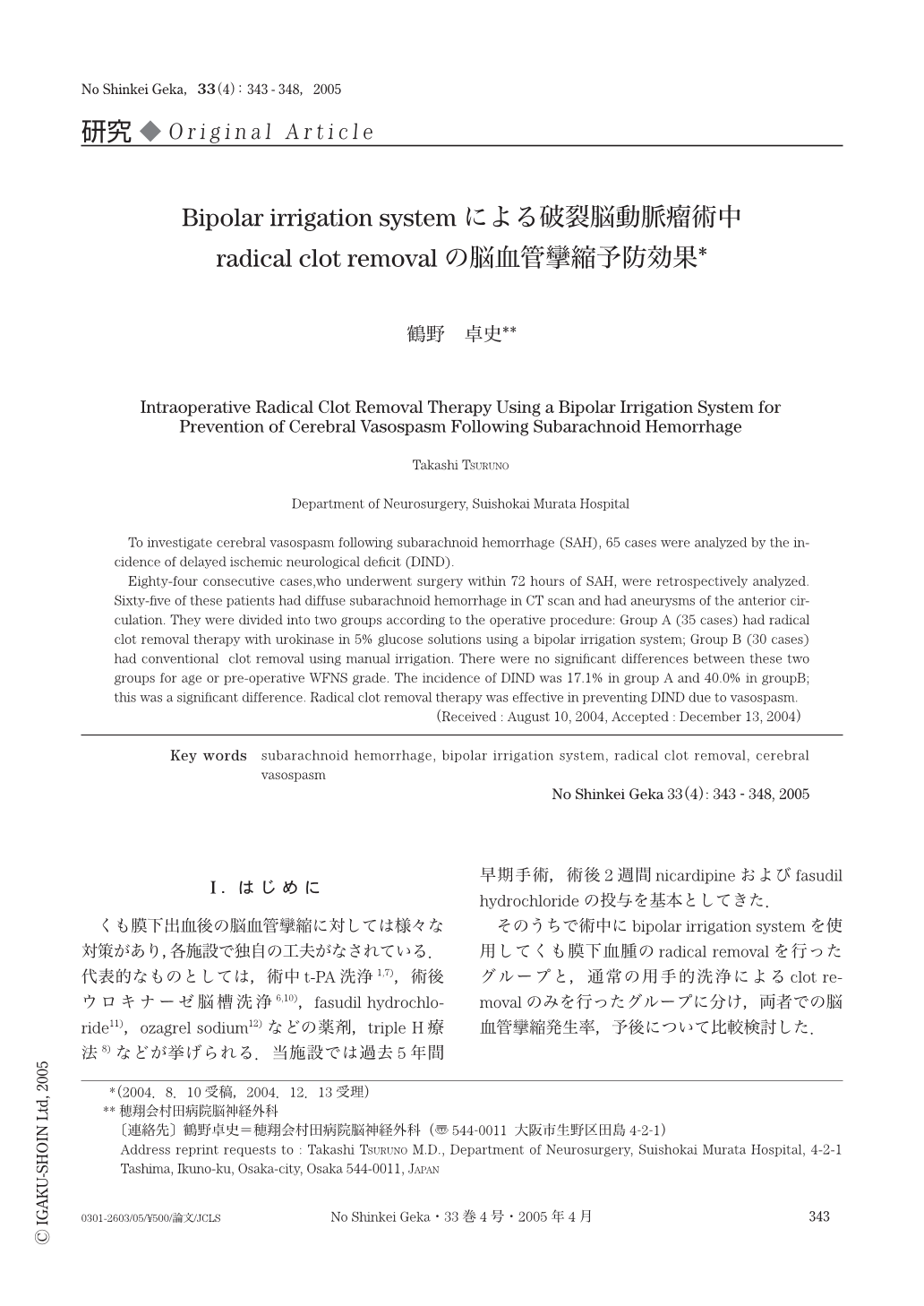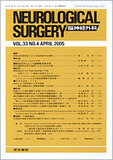Japanese
English
- 有料閲覧
- Abstract 文献概要
- 1ページ目 Look Inside
- 参考文献 Reference
Ⅰ.はじめに
くも膜下出血後の脳血管攣縮に対しては様々な対策があり,各施設で独自の工夫がなされている.代表的なものとしては,術中t-PA洗浄1,7),術後ウロキナーゼ脳槽洗浄6,10),fasudil hydrochloride11),ozagrel sodium12)などの薬剤,triple H療法8)などが挙げられる.当施設では過去5年間早期手術,術後2週間nicardipineおよびfasudil hydrochlorideの投与を基本としてきた.
そのうちで術中にbipolar irrigation systemを使用してくも膜下血腫のradical removalを行ったグループと,通常の用手的洗浄によるclot removalのみを行ったグループに分け,両者での脳血管攣縮発生率,予後について比較検討した.
To investigate cerebral vasospasm following subarachnoid hemorrhage (SAH),65 cases were analyzed by the incidence of delayed ischemic neurological deficit (DIND).
Eighty-four consecutive cases,who underwent surgery within 72 hours of SAH,were retrospectively analyzed. Sixty-five of these patients had diffuse subarachnoid hemorrhage in CT scan and had aneurysms of the anterior circulation. They were divided into two groups according to the operative procedure: Group A (35 cases) had radical clot removal therapy with urokinase in 5% glucose solutions using a bipolar irrigation system; Group B (30 cases) had conventional clot removal using manual irrigation. There were no significant differences between these two groups for age or pre-operative WFNS grade. The incidence of DIND was 17.1% in group A and 40.0% in groupB; this was a significant difference. Radical clot removal therapy was effective in preventing DIND due to vasospasm.

Copyright © 2005, Igaku-Shoin Ltd. All rights reserved.


